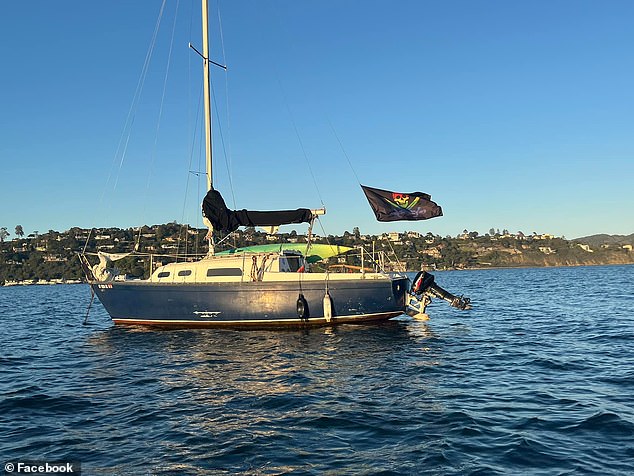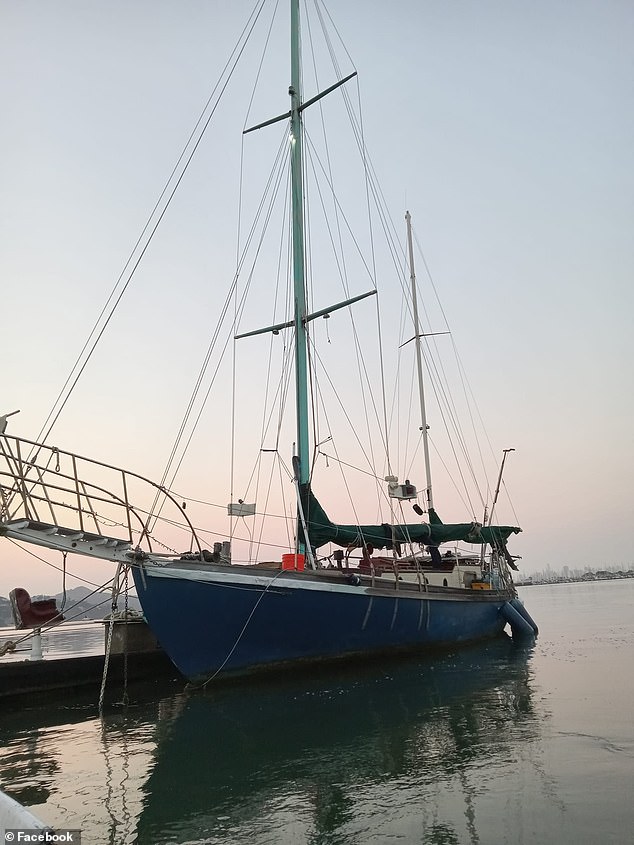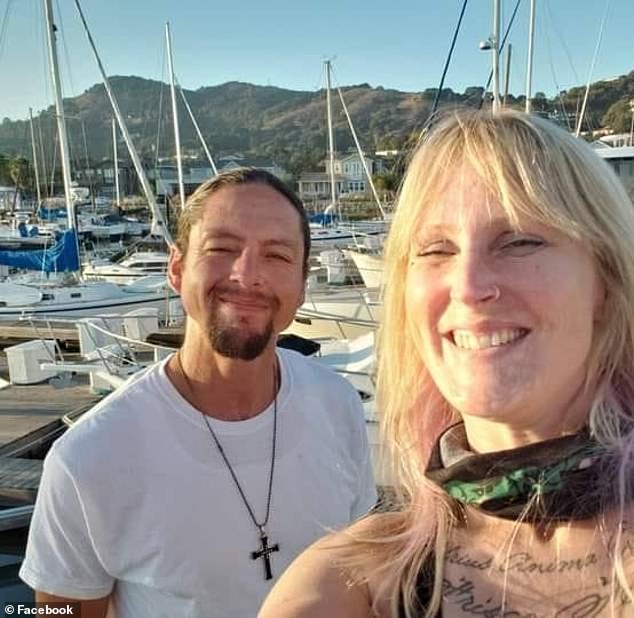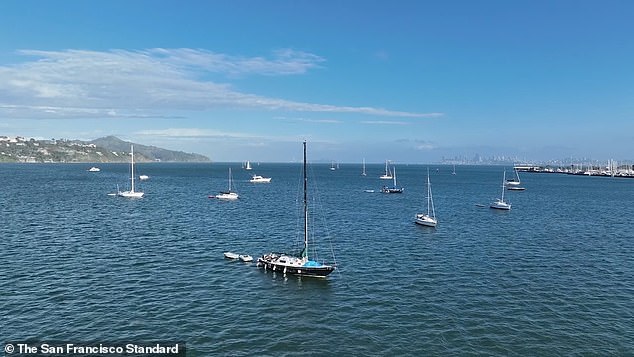Residents of the ‘anchor community’ permanently moored on San Francisco Bay say they will have nowhere to go if evicted from ‘floating homes’ to help protect environment
A community of sailors permanently anchored in San Francisco Bay is facing eviction from the waters they call home under a program aimed at protecting the fragile marine ecosystem.
About three dozen “anchor-outs” — artists, free spirits and the like — live rent-free and without the burden of permit fees in Richardson Bay, across from the affluent coastal community of Sausalito.
And while the waters were once packed with an estimated 200 boats, that number has increased sixfold during a campaign by local authorities and the Army Corps of Engineers to remove all vessels from the bay.
Chad Wycliffe, 41, is one of the few surviving sailors. He has taken up residence on his 35-foot fishing boat, the Iron Maiden, with two mixed-breed dogs.
“The city and the people have changed,” Wycliffe told the San Francisco Standard. “No one owns this water, no matter how much they want to impose regulations on it.”
‘Anchor-outs’ living rent-free on Richardson Bay are being evicted from the waters they call home, under an initiative aimed at protecting the marine ecosystem

Just a few years ago, about 200 boats filled the waters off Sausalito, but that number has dwindled to fewer than three dozen

Chad Wycliffe, 41, worries he won’t be able to afford the rent on land next to a spot in a marina if his boat is towed out of the bay
San Francisco Bay contains approximately 3,000 acres of eelgrass, the second largest habitat in all of California, and local officials are aiming to preserve it through the creation of an “Eelgrass Protection Zone.”
Biologists argue that the bay’s marine health depends on the seagrass that provides spawning habitat for the herring that form the base of the food chain.
About 400 hectares of seagrass are found in Richardson Bay, of which about 75 have been lost due to chains and anchors dragging across the seabed.
But the anchor-outs emphasize that the real culprits are agricultural fertilizer runoff and illegal yacht dumping.
Nevertheless, local agencies are working to relocate the sailors in phases as part of a $3 million program launching in 2021.
Under the terms, anchorages are eligible for a housing voucher for an apartment – typically worth $2,500 – and a $150 per foot buyback for the ship lifted from the water.
Speaking to the San Francisco Chronicle, Marin County Supervisor Stephanie Moulton-Peters praised the initiative.
“We’re not just telling people to get out of the water — we’re offering them housing,” explains Moulton-Peters, who represents Sausalito.
“It is one of the most compassionate approaches to those who live on the water and our need to move them.”

Biologists claim the permanently anchored boats have caused extensive damage to almost 40 hectares of seagrass, which provides crucial habitat for herring.

Wycliffe and his fiancée (pictured) agreed to give up their floating home under a program launched in 2021 that provides anchorages with housing vouchers

The program aims to remove all anchorages from Richardson Bay by 2026
The initiative is the latest in a series of efforts by local officials to rid the waters of anchorages.
The Richardson Bay Regional Agency has laws in place that limit vessels anchored in the bay to 72 hours unless a 30-day permit is approved, but these are largely ignored.
Although the campaign to remove the ships intensified during the pandemic, progress has been remarkably slow.
The agency set up a program where anchorages could sign up to move their boats to five of Sausalito’s marinas, but only two sailors took advantage of the offer.
It is now expected that all ships will be out of the water by October 2024, while a small number of ships will be allowed until 2026.
Anchorage will only be available to boaters staying 72 hours or less, with a permit issued by the harbor master.
And it’s not just to protect the seagrass. Speaking to the San Francisco Chronicle, Brad Gross, executive director of the Richardson Bay Regional Agency, expressed concern about the surrounding community.
“I don’t think having a fleet of illegally anchored ships with people on them and storing their belongings with dinghies and skiffs floating behind them makes a kid competing in a sailboat race feel safe,” Gross said.
It is this characterization that some sailors have difficulty with. Philip Crabtree claims he is not staying illegally as he has 50 days left on his permit and he is not harming anyone by anchoring in Richardson Bay.
“I am not an illegal anchor,” Crabtree wrote on Facebook. “Get your facts straight, Jack.”
As for Wycliffe, he has barely six months left before he has to move somewhere else.
He and his fiancée were among those who had agreed to trade their floating home for a life on land.
After her sudden death last year, the 41-year-old security guard is unsure how he will afford a spot at a marina, plus housing for himself and his pets.
“As much as I can fathom leaving, as I have in the past, I always come back,” Wycliffe said. “Perhaps it is my fate to die on these waters too.”
